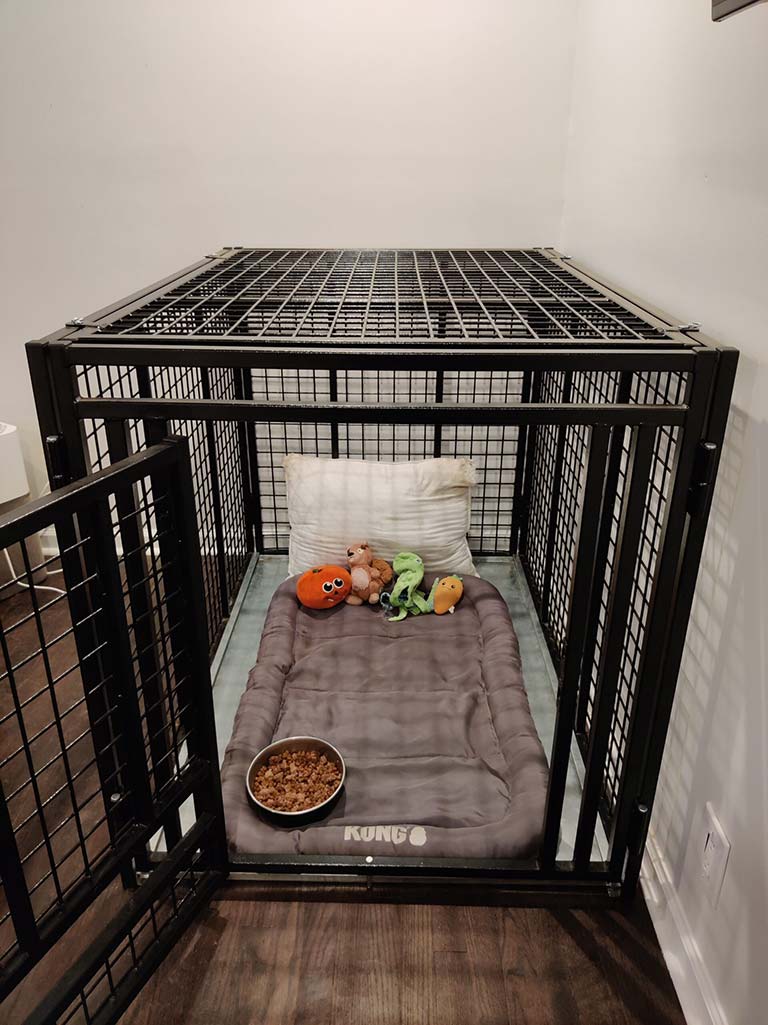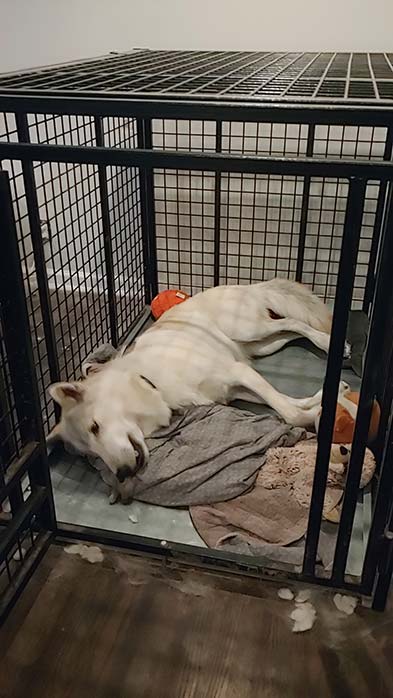Alright, let’s do it, let’s talk about the controversy over crates.
First and foremost, we DO crate our Ambassador Animals on a daily basis. Yes, you read that right, on a daily basis. Before we get into why, we want to address the controversy that is crate training.
We’ve heard a lot of negative feedback about crate training all types of animals and we want to take a minute to explore those perspectives. Crate training is often used as a way to help the housetraining process for domestic dogs with the theory that being confined to a crate will prevent a dog from eliminating inside. There are a lot of things that can go wrong here from a training perspective:


It is our belief that at the end of the day, you need to understand why the crate is used as a tool and how to appropriately manage/use that tool. So, let’s go back to the fact that we utilize a crate every single day and explain why.
Our Ambassador Animals, while greatly adored and loved by our whole team, are not pets. Part of our animal husbandry program here involves ensuring that our animals are prepared for emergency situations where they may have to be confined for periods of time. In order to build a positive association with their crates, we feed our animals their breakfast in their respective crates and keep our animals confined for 1-2 hours after they’ve eaten. We do this to not only build positive relationships with their crates but to reduce the risk of bloat in our animals.
Now, before you say that we’re forcing them into their crates in order to get food – we don’t. Choice is a very big part of our training program and their feeding time is no different. Each morning, our animals can choose to wear their leads to come indoors for feeding or choose not to and the end result is the same – they are fed. We don’t penalize them for not wanting to come indoors, we don’t force them to skip meals if they refuse to come inside, we don’t feed them less/more/differently. It is truly their preference to come inside, eat a full meal, and nap. On fasting days, they still will elect to come inside and nap in their respective crates.
We have gotten a few negative and hateful comments about crating our animals but we are positive that we are doing what is best for them. Our facility is in an area where tornadoes are a very real possibility, which means we’ve had to bring in our animals on a few occasions where a tornado watch or warning has been issued. So far, knock on wood, we’ve never incurred any type of problem or notable stress on our animals and that is very likely because crate training is an ongoing, daily, practice.
Can crates be detrimental to animals? Yes. They absolutely can. They are a tool and need to be used with proper understanding of how: that tool works, canine behaviors, and all possible outcomes of their use. Do we think they are the devil? No.
Will we stop using crates in our program? Not a chance. Our animals will elect to crate for periods of time by choice and we will never stop providing them that choice.